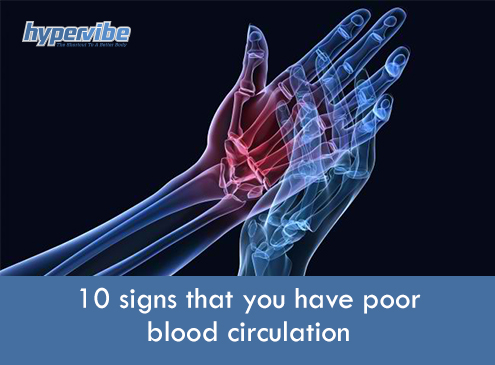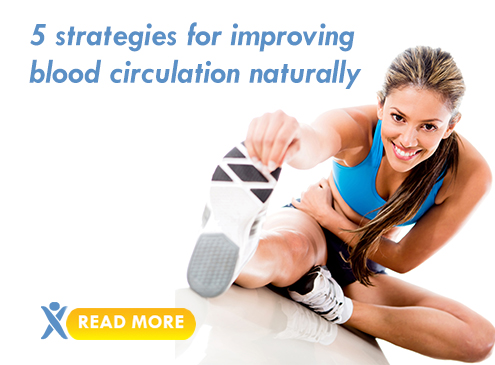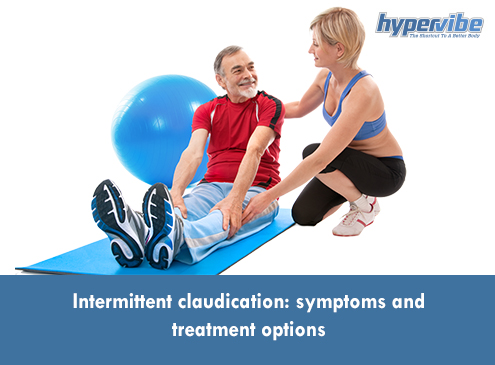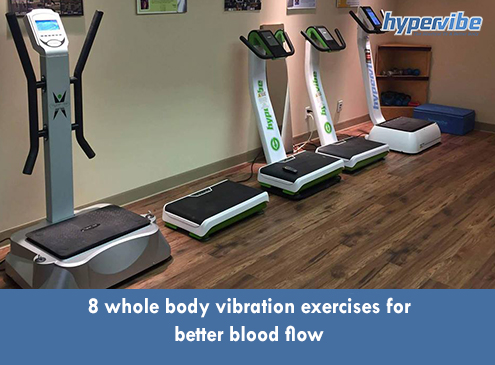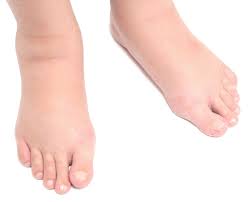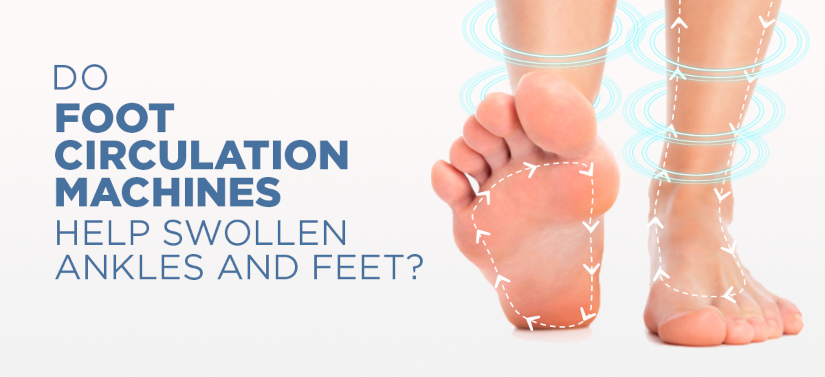10 Warning Signs of Poor Circulation
The movement of blood that takes places in the blood vessels is defined as circulation, both veins and arteries being involved in this process.
Veins carry the blood towards the heart and arteries away from the heart; the former task is more difficult and requires more effort from the circulatory system, so the blood vessels need help from the muscles that surround the veins. Muscles in feet and legs help in pumping blood upwards, and when this part of the process doesn’t work as it should, one experiences symptoms like heavy and aching legs, muscle cramps and pain, tiredness, cold feet or hands.
Still, it’s not only the lower body that is affected by poor circulation. Your entire organism suffers when circulation is impaired, and the bad news is that circulation does deteriorate with age. For this reason, it’s very common for adults and elders to experience symptoms caused by poor circulation.
The good news though is that most of these symptoms can be reduced through a series of home remedies and natural solutions, such as exercising and moving more, sleeping with the feet slightly elevated, or eating foods that ensure a healthy cardiovascular system and strong muscles.
Given below are some of the most common signs of poor circulation; since these aren’t specific, meaning that they can be experienced in many other conditions, it may be difficult to realize your circulation is the culprit behind these symptoms.
How to spot poor circulation
If your feet are painful after spending several hours in high heels or after wearing poor-fitting shoes for several hours, you’re probably not affected by a serious health condition, but if your feet and hands get swollen, puffy, painful and discoloured frequently and for no apparent reason, poor circulation may be the culprit. Here are 10 symptoms that will help you spot this health problem.
Muscle cramps and painful legs
Most people complain about their poor circulation if they experience tingling and numbness in their feet, or if their legs get swollen after spending the entire day standing or sitting. But the stinging pain in the limbs and the muscle cramps can also be the result of poor circulation, as muscles no longer receive the proper amount of oxygen they need for functioning properly. When too little oxygen reaches the limbs, they become cold and muscle cramps can occur.
Swelling of the tissues
If circulation is poor, fluid from the slowed blood flow can accumulate in the hands and feet, leading to the swelling of tissues and causing puffiness and itching. This happens because the circulatory system cannot push the blood back from the limbs to the heart in an effective manner and leaves some fluid behind, to lighten the load and make this task easier.
This fluid accumulates inside the tissues and causes edema or the swelling of hands and feet. You can identify this symptom by simply pressing the skin with your finger; if the indentation remains visible for more than 5 seconds, you might suffer from poor circulation.
Leg ulcers
Although diabetes sufferers are more likely to suffer from leg ulcers, people with poor circulation are also prone to this health problem, and women tend to develop ulcers more often than men. Ulcers, which are open wounds or unhealed sores on the legs, can keep recurring without adequate treatment, so even when they’re not painful, they’re still very disturbing, as ulcers are often accompanied by a rash, redness, scaly and dry skin, itching, a burning sensation and discolouration.
Varicose veins
If the blood vessels don’t work efficiently in pushing the fluid back to the heart, or the valves that pump the blood are weakened, they allow blood to build up and to cause the swelling and twisting of the veins. Although at the beginning the swelling may not be visible, they’ll still cause pain when standing for long periods, and may also lead to itchiness. If the accumulation of blood is significant, the veins bulge out and become unaesthetic.
Discolored skin
If your skin looks shiny or has a blue or pale colour, it may be due to poor circulation. The colour of your skin is influenced by the oxygen supply, and when the delivery of blood is impaired, skin can change its colour. This symptom is called cyanosis (bluish colouration) and appears when spending a long time in low temperature as well.
Hair loss
Although you may not see the link between hair loss and circulation, if you suffer from dry and thin hair that falls easily, it may be because of poor circulation or an inadequate diet. Hair, just like your other organs, receives its nutrients via the bloodstream, so when circulation is impaired, the supply of oxygen and nutrients is reduced. This triggers the thinning of hair, which becomes weaker and prone to falling.
Changes in appetite and digestive issues
Poor circulation may lead to changes in appetite and weight loss, as well as to digestive problems like constipation and cramps. If blood is pumped throughout the body less efficiently, all the other processes are slowed down, as the body has to handle the reduced supply of blood, oxygen and nutrients. This leads to slower digestion and thus to constipation and less frequent bowel movements.
Also, it causes the loss of appetite, as the liver – the organ that is responsible for sending hunger signals to the brain – no longer receives the adequate amount of blood. As a result, you feel hungry less often, experiences fewer food cravings and forget to eat during the day.
Increased tiredness
Poor blood circulation leads to tiredness as your entire body receives a reduced amount of oxygen and nutrients. Muscles that are poorly nourished and oxygenated tend to get tired much faster, as fuel is not produced efficiently. As a result, your muscles become sore, you feel energy deprived and your endurance is affected.
Concentration problems
Your brain requires nutrients and oxygen to function properly, so when the blood flow is reduced, it’s not only your limbs, liver or digestive system that are affected. The brain also suffers, as it relies heavily on the blood flow, so if you feel unable to focus and to think, if your short term memory less effective than it used to be, and you no longer feel determined to accomplish tasks during the day or to look for solutions for work problems, you may be suffering from poor circulation.
Chest pain
Chest pain or angina, as these symptoms are scientifically referred to, usually manifests through squeezing pain located in the chest area, pressure or the sensation of tightness. This symptom appears because the blood flow to the heart is restricted; the cardiac muscle, just like the skeletal ones, requires a certain amount of oxygen and nutrients, and when there isn’t enough oxygen-rich blood, angina occurs.
The symptom is more likely to manifest when there’s an increased demand for oxygen, such as when you exercise for example, or when you walk for a long period or spend several hours standing. When you rest, the oxygen demand is low, so your heart muscle is more likely to handle the reduced amount of blood without causing chest pain.
Want to add something to this article? Comment below or join our Facebook community and share your thoughts with us!
